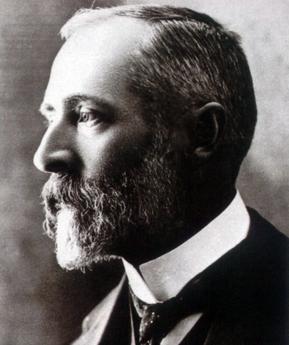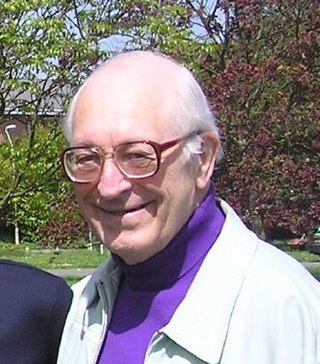
A botanical garden or botanic garden is a garden with a documented collection of living plants for the purpose of scientific research, conservation, display, and education. Typically plants are labelled with their botanical names. It may contain specialist plant collections such as cacti and other succulent plants, herb gardens, plants from particular parts of the world, and so on; there may be greenhouses, shadehouses, again with special collections such as tropical plants, alpine plants, or other exotic plants.

Kirstenbosch is an important botanical garden nestled at the eastern foot of Table Mountain in Cape Town. The garden is one of 10 National Botanical Gardens covering five of South Africa's six different biomes and administered by the South African National Biodiversity Institute (SANBI). Prior to 1 September 2004, the institute was known as the National Botanical Institute.

Harry Bolus was a South African botanist, botanical artist, businessman and philanthropist. He advanced botany in South Africa by establishing bursaries, founding the Bolus Herbarium and bequeathing his library and a large part of his fortune to the South African College. Active in scientific circles, he was a Fellow of the Linnean Society, member and president of the South African Philosophical Society, the SA Medal and Grant by the SA Association for the Advancement of Science and an honorary D.Sc. from the University of the Cape of Good Hope.

Ernest Edward Galpin (1858–1941), was a botanist and banker born in the Cape Colony. He left some 16,000 sheets to the National Herbarium in Pretoria and was dubbed "the Prince of Collectors" by General Smuts. Galpin discovered half a dozen genera and many hundreds of new species. Numerous species are named after him such as Acacia galpinii, Bauhinia galpinii, Cyrtanthus galpinii, Kleinia galpinii, Kniphofia galpinii, Streptocarpus galpinii and Watsonia galpinii. He is commemorated in the genus Galpinia N.E.Br. as is his farm in the genus Mosdenia Stent.

Robert Allen Dyer was a South African botanist and taxonomist, working particularly on Amaryllidaceae and succulent plants, contributing to and editing of Bothalia and Flowering Plants of Africa and holding the office of Director of the Botanical Research Institute in Pretoria from 1944 to 1963.

Gilbert Westacott Reynolds, was a South African optometrist and authority on the genus Aloe.
Robert Harold Compton was a South African botanist. The Compton Herbarium at Kirstenbosch National Botanical Garden, which he founded in Cape Town in 1939, was named in his honour.

Leslie Charles "Larry" Leach was a Rhodesian taxonomic botanist.

The Bolus Herbarium was established in 1865 from a donation by Harry Bolus of his extensive herbarium and library to the South African College, which later became the University of Cape Town.

Harriet Margaret Louisa BolusnéeKensit was a South African botanist and taxonomist, and the longtime curator of the Bolus Herbarium, from 1903. Bolus also has the legacy of authoring more land plant species than any other female scientist, in total naming 1,494 species.

Elsie Elizabeth Esterhuysen was a South African botanist. She was described as "the most outstanding collector ever of South African flora", amassing 36,000 herbarium specimens.
Peter Goldblatt is a South African botanist, working principally in the United States.
Graham Dugald Duncan(born 1959) is a South African botanist and specialist bulb horticulturalist at the Kirstenbosch National Botanical Garden, Cape Town, South Africa.

Edith Struben was a South African botanical illustrator and painter. She was the eldest daughter of Harry Struben, a pioneer gold miner on the Witwatersrand.

Joseph William "Jimmy" Mathews was a horticulturist and gardener from England who served as the first curator of the Kirstenbosch national botanical garden in Cape Town, South Africa.

Rosemary Charlotte Holcroft was a South African botanical illustrator.
Winsome Fanny Barker was a South African botanist and plant collector noted for her work as Curator building the collection at the herbarium of the Kirstenbosch National Botanical Garden, as well as her research on Amaryllidaceae, Liliaceae and Haemodoraceae.

Gordon Douglas Rowley (1921–2019) was a British botanist and writer specialising in cacti and succulents.
Isobel Agnes Arbuthnot (1870–1963) was an Irish-born botanist and botanical collector based in South Africa.

Dracaena hallii is a species of succulent plant native to Mozambique, Zimbabwe, and Limpopo Province of South Africa. The species was named for Harry Hall, formerly the curator of succulents at Kirstenbosch National Botanical Garden in Cape Town. Commonly known as the "baseball bat" plant, it has extremely thick foliage with a rounded shape and a central channel.


















